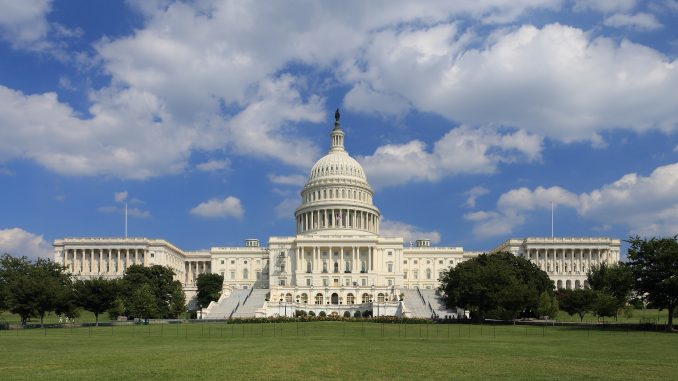
WASHINGTON (AP) — Hundreds of thousands of federal employees are back to work after the longest government shutdown in the nation’s history finally came to an end last week. But as the gears of government again begin to turn, some workers across agencies are wondering when they’ll see the money they’re owed for the two pay periods they were forced to stay home or work without compensation.
WHO WILL GET PAID?
For 35 days, nine of the 15 main federal departments were largely shuttered, leaving 800,000 employees without paychecks. The departments affected were Housing, Agriculture, Treasury, Homeland Security, Interior, State, Transportation, Commerce and Justice.
Early in the shutdown, Congress passed bills to make sure federal workers caught in the crosshairs of the political stalemate in Washington would indeed get paid, and the administration last week made clear it expects to swiftly reimburse both furloughed workers and those who were called in to work.
The Office of Personnel Management published a memo offering guidance to departments scrambling to restore operations.
Any previously scheduled vacations or leave canceled because of the furlough must be restored, the memo said. Furloughed employees will be paid their standard rate for hours they would have worked and for scheduled overtime, while “excepted” workers who reported for duty throughout the shutdown will be compensated for hours they worked, including overtime. But to speed things up, OPM said, agency payrolls may not be able to factor overtime payments into the first paychecks issued after the shutdown.
“The U.S. Office of Personnel Management (OPM) is aware of the difficulties created by the lapse in appropriations,” the memo said. “We are committed to ensuring that retroactive pay is provided as soon as possible. As a result, we appreciate the support of all human resources, payroll and shared service centers to work towards this goal.”
WHEN WILL THEY GET PAID?
White House budget director Mick Mulvaney said Sunday that he hopes all federal workers will receive back pay this week. But when exactly that happens depends on the agency.
“Some of them could be early this week. Some of them may be later this week,” Mulvaney said on CBS’ Face the Nation. “But we hope that by the end of this week all of the back pay will be made up and of course the next payroll will go out on time.”
Some departments have started updating employees on the timing.
In a post on its website, the Department of Housing and Urban Development this weekend assured employees they will receive one paycheck that includes wages for both missed pay periods by Thursday, and any overtime will be paid out in the following pay period. Days when workers were forced to stay home won’t count against any medical leave allotments, and time off accrued during the shutdown will be restored. HUD specifies that any unemployment benefits paid to its employees during the shutdown be repaid.
The USDA directed all employees to turn in their timesheets no later than noon Monday; timekeepers worked through the weekend to handle the crush of incoming timesheets, an agency memo said. The department said employees will be paid by Thursday.
An email sent to Justice Department employees at the Civil Division said workers should expect to see their paychecks “hopefully by no later than this Thursday.”
As for contractors, Mulvaney said whether they receive any reimbursement depends on the contract.
WHAT DOES THIS MEAN FOR THE ECONOMY?
The nonpartisan Congressional Budget Office on Monday said the shutdown delayed $18 billion in spending by government workers and caused a permanent $3 billion loss in economic growth.
WHAT HAPPENS NEXT?
President Donald Trump on Friday signed a bill to reopen the government for three weeks, but warned he could shut the government down again if Congress doesn’t agree to his demand of $5.7 billion in funding for a border wall. Advocates, lawmakers and even the CBO are sounding the alarm that another lengthy shutdown could do significant damage to the economy and vital public benefits including housing assistance and food stamps, a program that serves roughly 40 million low-income Americans.
